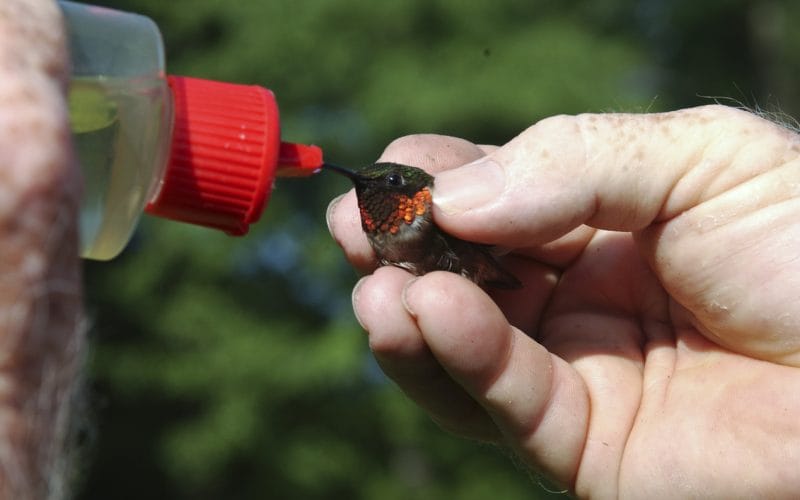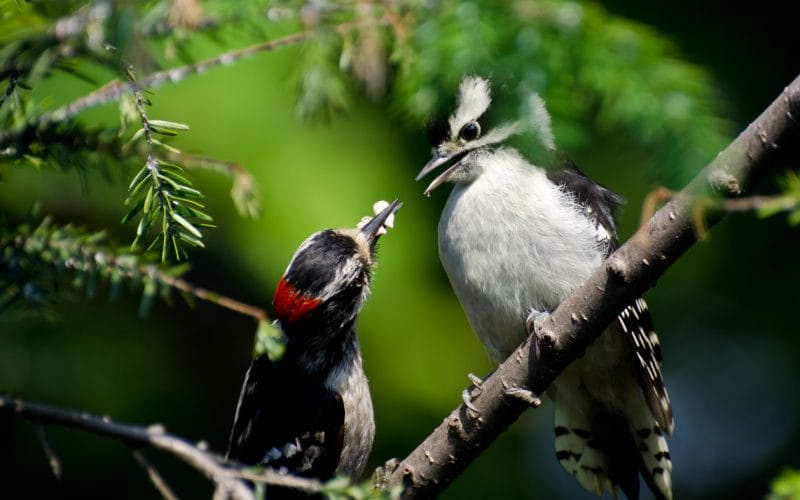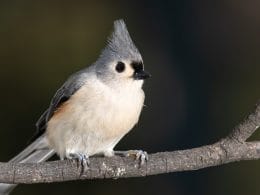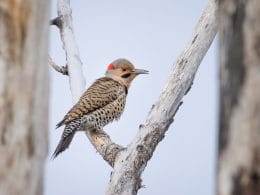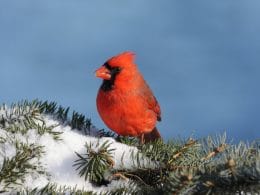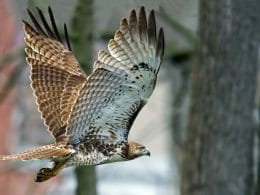Did you know that there are about 360 hummingbird species around the world, and that you’d be lucky to spot one or two in Michigan?
Hummingbirds are breathtaking little creatures. Their bright colors and their quick wings are a beautiful sight. It’d be lovely to watch them up close, but sadly, most hummingbirds disappear as quickly as they show up.
Let’s get to know these birds better!
The 6 Most Common Hummingbirds in Michigan
Now that you know more about hummingbirds, let’s shed light on the most common species of hummingbirds in Michigan.
1. White-eared Hummingbird
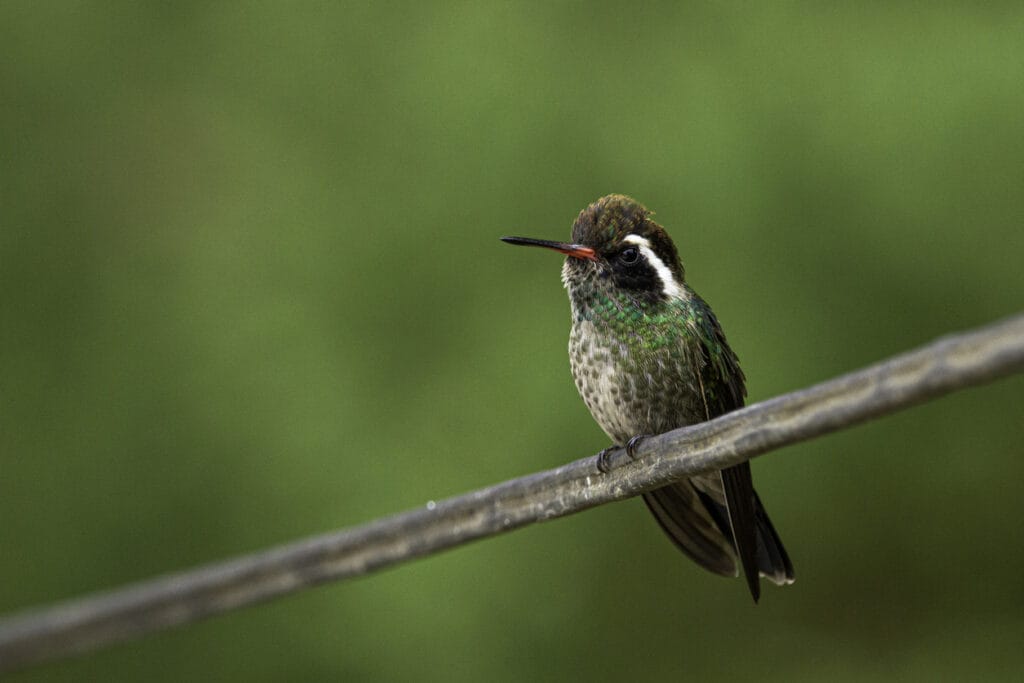
White-eared Hummingbirds were sighted in Michigan in 2005. However, the chances of another appearance aren’t very high.
These birds tend to be found further to the south and they take high mountain forests for homes. They can be found in Texas, Mexico, and New Mexico.
When it comes to color, the male White-eared Hummingbirds are very colorful. Their upperparts are a beautiful green shade and their breasts have a blue-green hue. They also have black and violet heads.
As mentioned in their name, their white-striped ears are what make them stand out. These white stripes are bolder and more visible in males more than females.
Author Note: When it’s time for their mating season, the males gather in different groups to search for suitable female partners.
After mating, the females will lay a couple of eggs and incubate them for 14-16 days. Once the eggs hatch, they feed their young with their long bills and provide them with a mixture of treats, insects, and nectar.
White-eared Hummingbirds usually feed on red tubular flowers. Why red, specifically, you might wonder? It’s because bright red and orange shades are what attract them most. To them, these two colors are an indication that the flower contains a lot of nectar.
White-eared Hummingbirds are considered solitary birds. They don’t form flocks or even migrate together. Another thing about these birds is that long-distance migration isn’t a habit of theirs.
Their movement always depends on the availability of their preferred flowers. They’re typically sighted in the United States during the summer months and some of them can be found in the far northern part of the Mexican border during the fall.
2. Anna’s Hummingbird

Anna’s Hummingbirds are commonly found along the pacific coast all year. Their heads are large compared to other Hummingbird species. They also have long, straight bills, and their backs and chests are a shiny, bronze-green shade.
Males have a shiny rosy pink color that stretches from their throats up to their crown. Always shows, aren’t they?
Another fun fact about the males is that, during mating season, they put on a little vocal show and sing raspy songs (watch out Johnny Cash). Their songs increase in volume and intensity along the season.
And as if singing wasn’t showy enough, these guys also do physical displays and use their tail feathers to make sudden, loud, explosive-like sounds to attract partners.
These birds are among many hummingbirds that will breed together and create numerous hybrids. Because of that, identifying the exact species of a hummingbird can be tricky.
Anna’s Hummingbirds can be spotted in a variety of places like open woods, gardens, and beside ponds.
Pacific Northwest hummingbirds are known to migrate south in winter looking for warmer areas. However, Anna’s hummingbirds are the only ones that don’t always follow this rule.
They either migrate to very short distances to look for warmth and better food sources, or they don’t migrate at all.
3. Broad-Billed Hummingbird
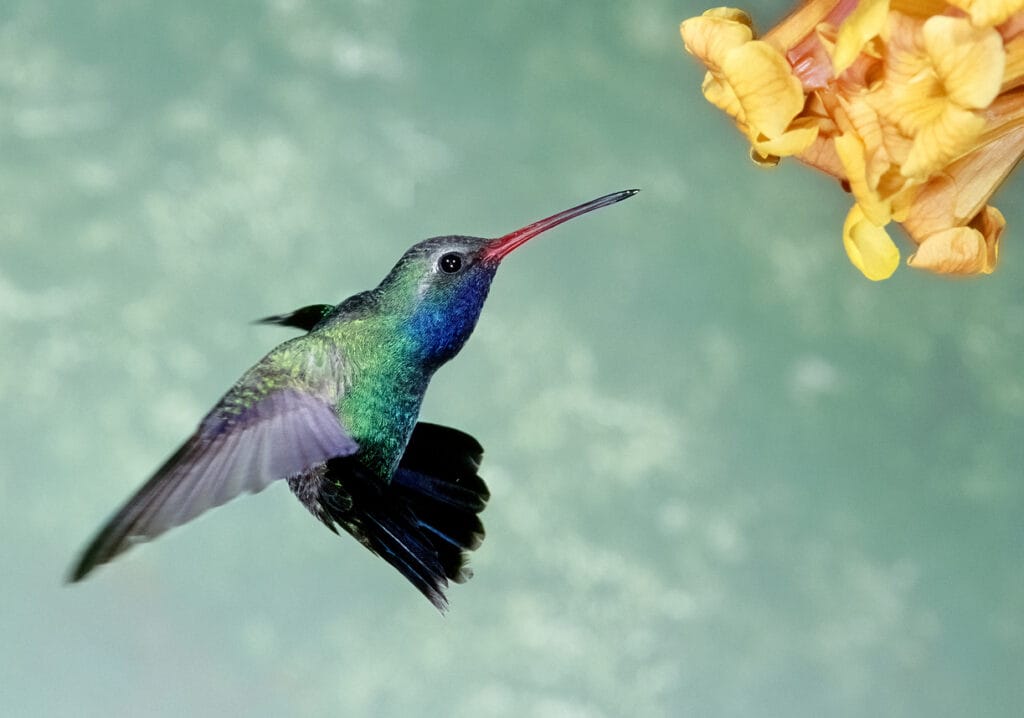
Did you know that Broad-billed Hummingbirds eat around 1-½ to 2 times their body weight in nectar on a daily basis? An impressive ability for such little fellas!
They always hunt for food in foothills, canyons, and beside streambeds, where there’s sure to be an abundance of flowers.
They’re also known to roam around gardens and like to visit bird feeders regularly so make sure to leave them a treat!
Broad-billed Hummingbirds are usually sighted in Mexico. However, during mating season, they can also be found in the southwestern mountainous canyons and in southern Arizona anytime between March and September.
Top Tip: They have black-tipped red bills and black, forked tails. And as always, the males add spice with their shiny colors. They have emerald green bodies and deep blue throats. The females, on the other hand, are recognized by white stripes on their eyes.
Another interesting fact about Broad-billed Hummingbirds, and all hummingbirds, in general, is the way they sleep. They hang upside down from tree branches and go into a near-hibernation state known as torpor.
When in this state, hummingbirds lower their heartbeat, respiration rate, and body temperature to around 1/15th of what they normally are. This state allows them to slow their metabolism. In turn, this helps them conserve their energy and lower their need for food.
4. Mexican Violetear

Mexican Violetears are commonly found in the mountains of Costa Rica, southern Mexico, and Honduras.
These hummingbirds like to wander and travel far away from home. They’ve been sighted in different places like Michigan, Texas, and Canada.
Mexican Violetears were previously called Green Violetears because of their incredible, shiny green and blue shades.
They also have beautiful violet patches on the sides of their heads and a bronze shade in their central feathers. Their tails have a blue shade towards the end and they’re square-shaped.
Like most birds in their family, Mexican Violetears feed on insects and nectar, so you’ll always find them in low temperature, subtropical forests, and in woodlands where flowers are abundant.
During mating season, the males attract the females. After mating, the females are responsible for finding a suitable location for the nest. The female then lays two eggs and incubates them for 14 to 18 days.
These guys are just a tad heavier than a nickel. They weigh around 4.8 to 5.6 grams. They’re also known to live around 12 years.
5. Ruby-Throated Hummingbird

Ruby-throated Hummingbirds are often sighted in Michigan during mating season. These birds commonly live in the tropics, but when they’re not, they like to be in semi-open areas like wood edges and gardens. They prefer nesting in trees or tall shrubs.
These guys are a bit showier than other Hummingbirds. Upon seeing a suitable mate, they start dramatic flight sequences to attract the females.
Females usually have two broods and they lay two eggs per brood. They then incubate them for about 11 to 16 days. Fun fact about hummingbird eggs, they’re as tiny as jellybeans and can be even smaller sometimes.
Ruby-throated Hummingbirds are known for their shimmery shades. Both their backs and heads have a mixture of emerald and yellow-green and they have grayish-white bellies.
One thing that differentiates the males from the females is that the males’ throats have a shiny red color. The females, however, have white throats with some light gray streaking.
Ruby-throated Hummingbirds have very thin needle-like bills. The thin shape of their bills works to their advantage and makes it easier to extract nectar from their favorite flowers.
Remember how Mexican Violetears were the weight of a nickel? Ruby-throated hummingbirds are even lighter! They weigh around 3 grams, which is about two-thirds the weight of a nickel.
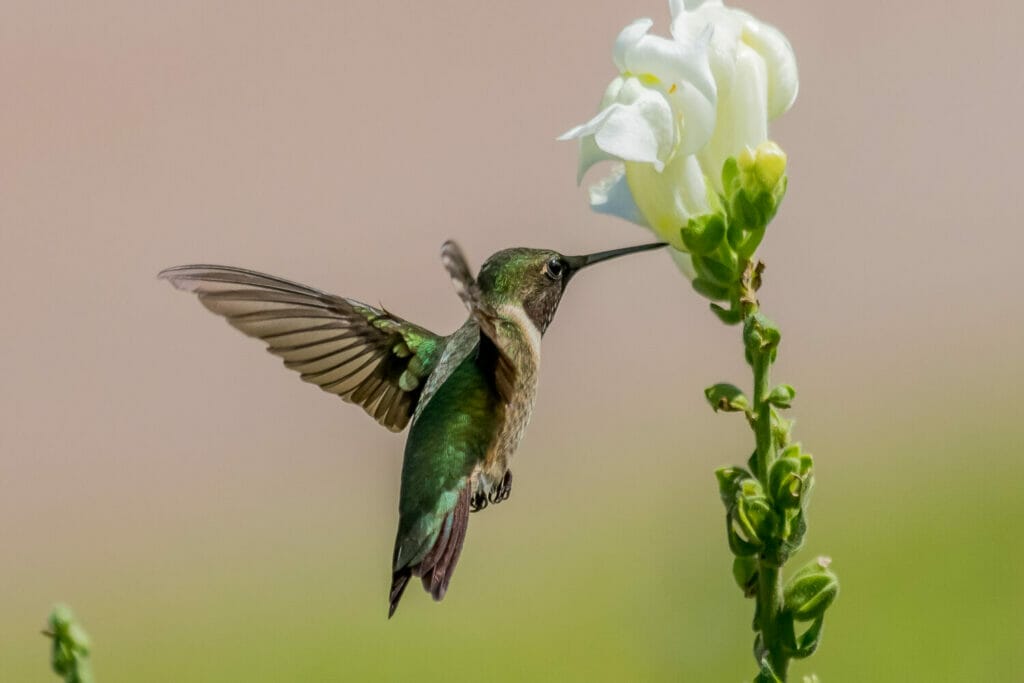
Ruby-throated Hummingbirds usually stay and breed in North America in the summer. These guys enjoy the warmth, so when winter arrives they’ll start heading towards a warmer place. They’ll usually head to southern Mexico and Central America.
However, their journey can get really difficult because most of them travel through the Gulf of Mexico. It can take them over 18 hours of continuous flying to reach land on the other side of the gulf. Such fierce little creatures!
Because the journey can get so rough, they sometimes get swept up in it and it gets confusing for them to return to their breeding grounds every year. If you see these guys in your backyard, make sure to leave a treat! You’d be helping them on their long journey.
6. Rufous Hummingbird
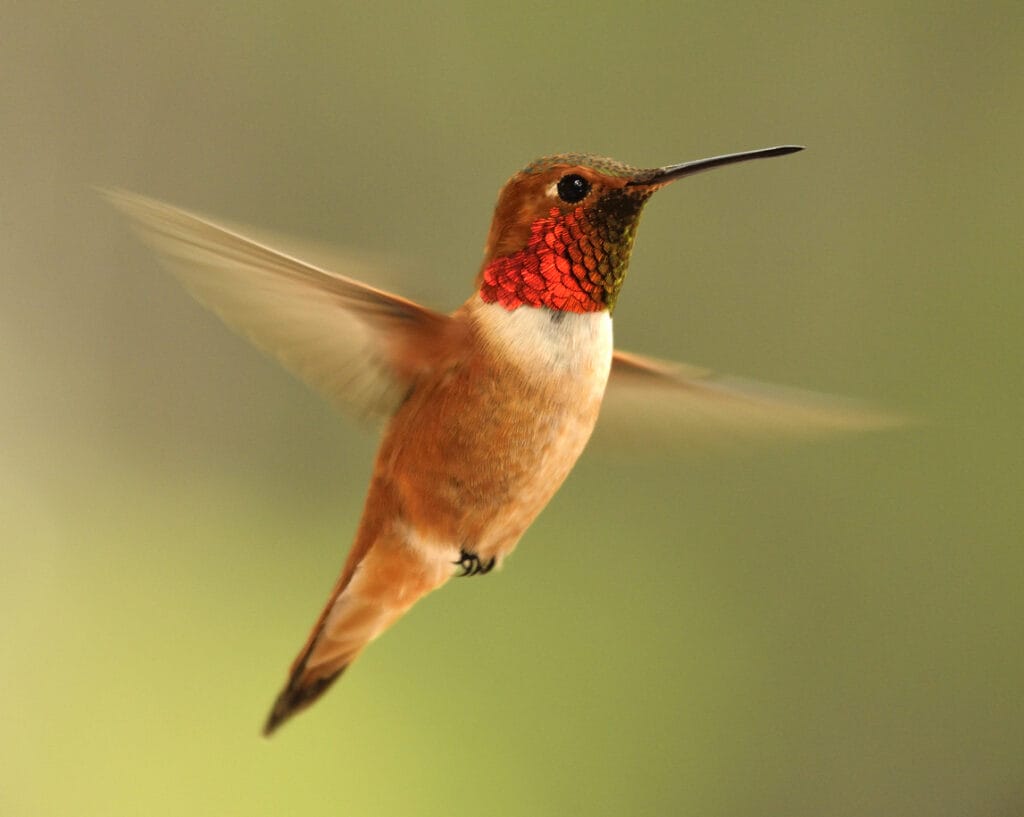
Did you know that Rufous Hummingbirds can journey for 4,000 miles in just a few months? They start their migration journeys before other hummingbird species.
They mostly live in the western half of North America and they start their journey from southern Mexico and travel all the way to places like Canada and Alaska on their journey.
Author Note: In January, they’ll leave their winter home in Mexico and start heading to the Pacific Coast. They usually arrive at the coastline by late April. As for the birds that breed in Alaska and Canada, they run a little late and arrive by mid-May.
Another fun fact about Rufous Hummingbirds is that they make sure to fatten up and eat well before they depart for their long journeys. They’ll store lots of energy from nectar and even snack on some insects for protein.
While they’re commonly found in Alaska or the North Pacific, Rufous Hummingbirds can be sighted in Michigan mostly during the fall or winter.
The males are as always the shiny, showy ones. They have beautiful shiny shades of rusting orange across their body. They also have white chests and patches on their throats.
Unlike Ruby-throated Hummingbirds that have red patched throats, Rufous Hummingbirds have yellow-greenish patches or orange-reddish patches in some cases.
The females, on the other hand, have a matte, dark green shade on their backs with a bit of white spotting on their throats.
Rufous Hummingbirds are around 3.1 inches in length. These guys are surprisingly aggressive despite their small size. They get very protective of their territories and food supply.
If they feel like either is threatened they’ll even go against much bigger birds like crows, hawks, and jays.
Scientists believe that their aggressive behavior may be due to their high consumption of sugar. After all, these guys have a huge sweet tooth and they consume about half their weight in sugar daily.
A Quick Look Into Hummingbirds
Hummingbirds are native to South and North America, and they belong to the Trochilidae family. The majority of its 360 species can be found in the tropics.
In terms of size, these birds are on the smaller side. Most hummingbird species measure three and five inches in length, and they can be even smaller sometimes.
The smallest recorded hummingbird is the Bee Hummingbird, which measures only two inches in length and weighs about 0.069 oz!
Bee Hummingbirds are native to the Caribbean on Cuba island, so don’t expect to find them in Michigan. Fun fact about them is that they’re not just the smallest hummingbirds; they’re in fact the smallest birds alive! And because they’re so small with shiny, brilliant colors, they seem like flying jewels at a distance.
Per contra, the largest recorded hummingbird species is the Giant Hummingbird. It measures around nine inches in length and weighs around 0.85 oz.
Giant Hummingbirds migrate to South America in the summer, mostly to temperate areas. And in the winter, they head north towards areas with more tropical weather. They sure love to be warm! These large-yet-still-tiny fellows are known to feed on flower nectar but they eat insects and spiders as well.
Author Note: Hummingbirds are known for their beautiful, shiny colors. Like most birds, males are commonly more colorful and shiny than females. They use their shiny colors to mark their territories.
If you think about it, the females’ dim colors give them an advantage. They allow them to be less noticeable and let them hide better while nesting.
A fun fact about Hummingbirds is that they can fly backward. They’re actually the only bird with this ability because they have a ball and socket joint at their shoulders, which allows their wings to rotate 180 degrees. Pretty cool trick if you ask me!
Conclusion
Even though hummingbirds are very small creatures, they sure are tough little guys, from the distance they cover to their fierce protection of their territories.
We hope you enjoyed our guide on the most common hummingbirds in Michigan.
Not only that, their beautiful, vibrant colors make them a sight to behold; if you can catch them, of course. If you catch a glimpse of hummingbirds in Michigan, you sure are a lucky person!
FAQ
Hummingbirds generally come to Michigan in late spring and leave during the fall.
Yes, they are summer visitors and common in the south-east of the state. If feeders are put out in backyards, they should attract them.
Keep an eye out in the fall and take down feeders if you haven’t seen any hummingbirds for a couple of weeks.





